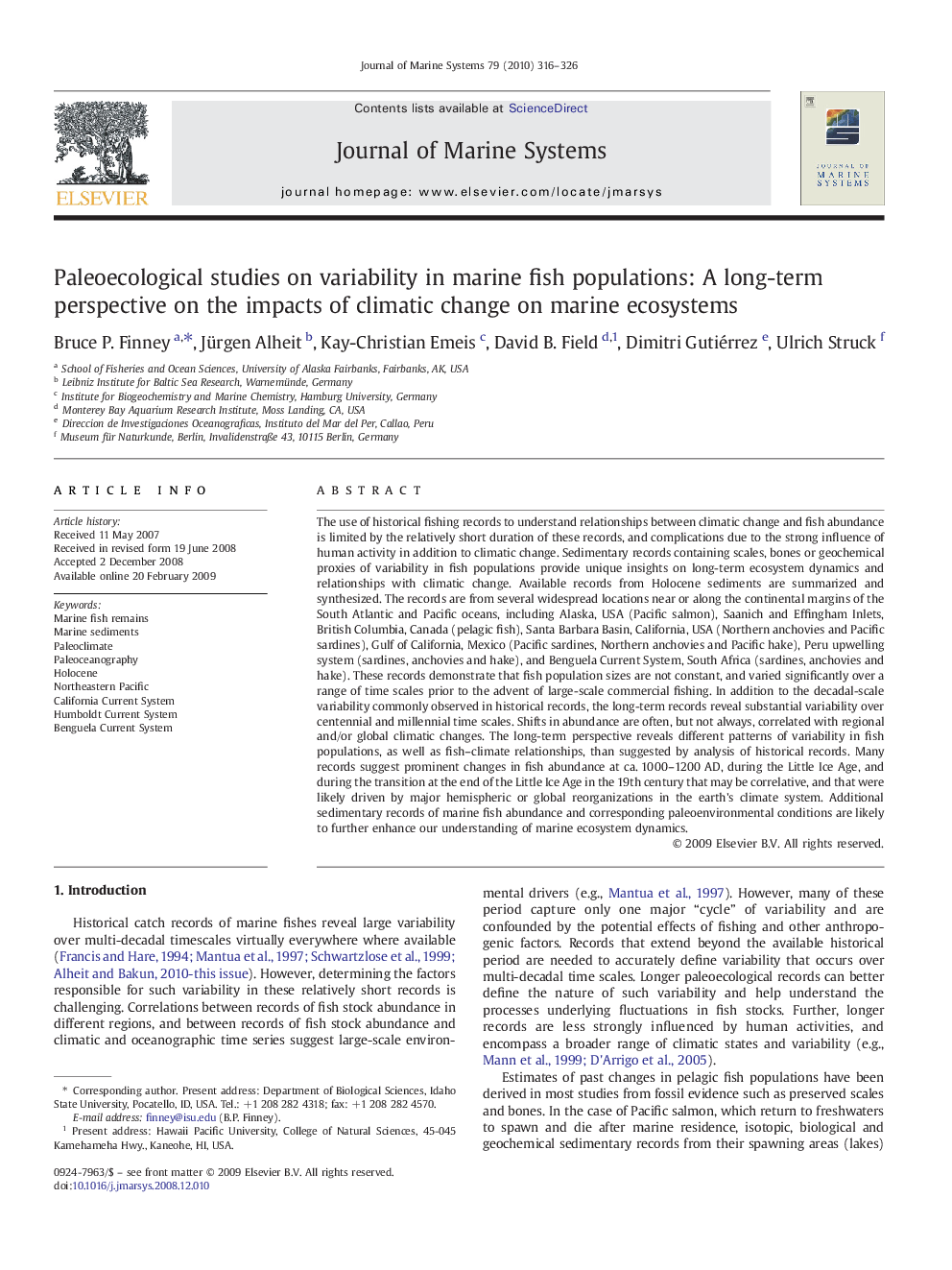| کد مقاله | کد نشریه | سال انتشار | مقاله انگلیسی | نسخه تمام متن |
|---|---|---|---|---|
| 4548628 | 1627336 | 2010 | 11 صفحه PDF | دانلود رایگان |

The use of historical fishing records to understand relationships between climatic change and fish abundance is limited by the relatively short duration of these records, and complications due to the strong influence of human activity in addition to climatic change. Sedimentary records containing scales, bones or geochemical proxies of variability in fish populations provide unique insights on long-term ecosystem dynamics and relationships with climatic change. Available records from Holocene sediments are summarized and synthesized. The records are from several widespread locations near or along the continental margins of the South Atlantic and Pacific oceans, including Alaska, USA (Pacific salmon), Saanich and Effingham Inlets, British Columbia, Canada (pelagic fish), Santa Barbara Basin, California, USA (Northern anchovies and Pacific sardines), Gulf of California, Mexico (Pacific sardines, Northern anchovies and Pacific hake), Peru upwelling system (sardines, anchovies and hake), and Benguela Current System, South Africa (sardines, anchovies and hake). These records demonstrate that fish population sizes are not constant, and varied significantly over a range of time scales prior to the advent of large-scale commercial fishing. In addition to the decadal-scale variability commonly observed in historical records, the long-term records reveal substantial variability over centennial and millennial time scales. Shifts in abundance are often, but not always, correlated with regional and/or global climatic changes. The long-term perspective reveals different patterns of variability in fish populations, as well as fish–climate relationships, than suggested by analysis of historical records. Many records suggest prominent changes in fish abundance at ca. 1000–1200 AD, during the Little Ice Age, and during the transition at the end of the Little Ice Age in the 19th century that may be correlative, and that were likely driven by major hemispheric or global reorganizations in the earth's climate system. Additional sedimentary records of marine fish abundance and corresponding paleoenvironmental conditions are likely to further enhance our understanding of marine ecosystem dynamics.
Journal: Journal of Marine Systems - Volume 79, Issues 3–4, 10 February 2010, Pages 316–326